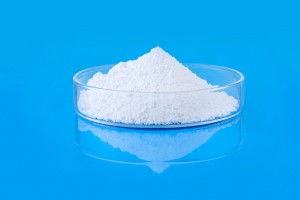What is Capsule grade HPMC ?
Capsule grade Hydroxypropyl Methylcellulose (HPMC) is a specific type of HPMC that is formulated and processed to meet the stringent requirements for use in pharmaceutical capsules. HPMC is commonly used as a capsule material due to its biocompatibility, solubility in water, and film-forming properties. Capsule grade HPMC contributes to the controlled release of drugs, stability of formulations, and the overall performance of pharmaceutical capsules.
Key features and considerations for capsule grade HPMC include:
1. Biocompatibility:
Capsule grade HPMC is chosen for its biocompatibility, meaning it is well-tolerated by the human body. This is a crucial characteristic for materials used in pharmaceutical and medical applications.
2. Solubility:
It exhibits solubility in water, allowing for the controlled release of the drug within the gastrointestinal tract. This property is important for the bioavailability and efficacy of pharmaceutical formulations.
3. Film-Forming Properties:
Capsule grade HPMC has film-forming properties, which is essential for creating a stable and uniform coating on the capsule surface. The film helps protect the encapsulated material and facilitates the desired release profile.
4. Controlled Release:
The use of capsule grade HPMC in pharmaceutical formulations enables the formulation of controlled-release or extended-release drug delivery systems. This is beneficial for medications that require a gradual release over an extended period.
5. Stability:
Capsule grade HPMC contributes to the stability of the pharmaceutical formulation. It helps protect the encapsulated drug from external factors, such as moisture and light, which can impact the drug’s efficacy.

6. Compatibility:
It is compatible with a wide range of pharmaceutical ingredients, allowing for the encapsulation of various drugs without compromising their stability or performance.
7. Regulatory Compliance:
Manufacturers of pharmaceutical-grade HPMC adhere to strict quality standards and regulatory requirements. Capsule grade HPMC used in pharmaceutical applications must comply with pharmacopeial standards and regulations established by health authorities.
8. Transparency and Appearance:
Capsule grade HPMC can contribute to the overall appearance of the capsule, providing a transparent and smooth surface that is visually appealing.
9. Versatility:
It can be used in the production of both hard gelatin capsules and vegetarian/vegan capsules, providing versatility in capsule formulation based on dietary and cultural preferences.
10. Manufacturing Process:
Capsule grade HPMC undergoes specific processing steps to ensure it meets the requirements for capsule production. This includes considerations for particle size, viscosity, and other properties relevant to the encapsulation process.
11. Particle Size:
The particle size of capsule grade HPMC is often controlled to ensure uniformity in the coating process, contributing to the overall quality of the capsules.
Pharmaceutical companies and capsule manufacturers carefully select capsule grade HPMC to ensure that it meets the specific requirements for their formulations. The use of capsule grade HPMC allows for the development of pharmaceutical products that deliver drugs in a controlled and effective manner while maintaining high standards of safety and quality.
Post time: Nov-25-2023
